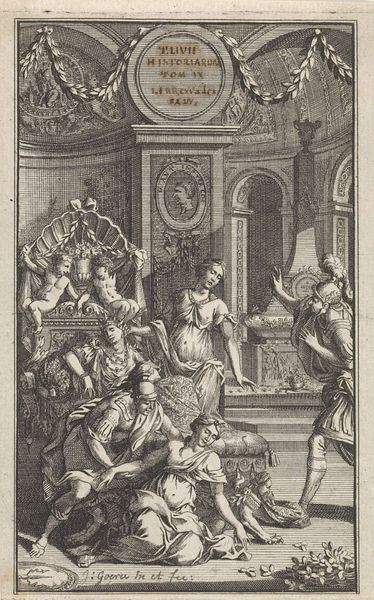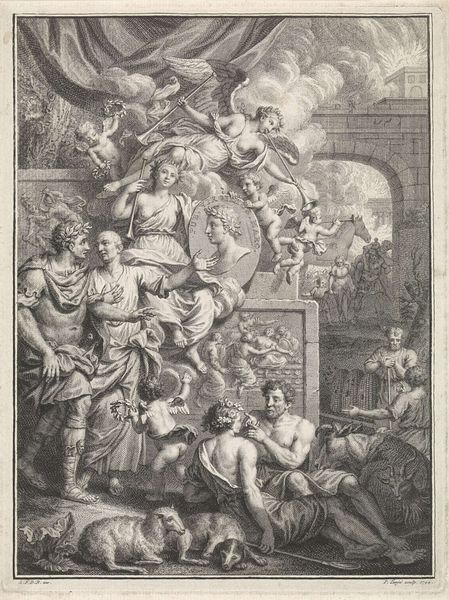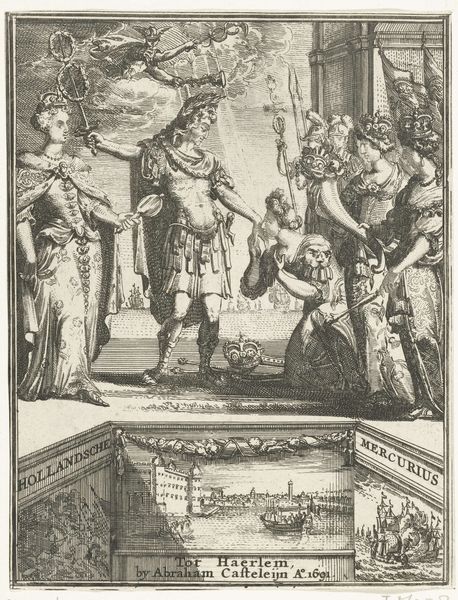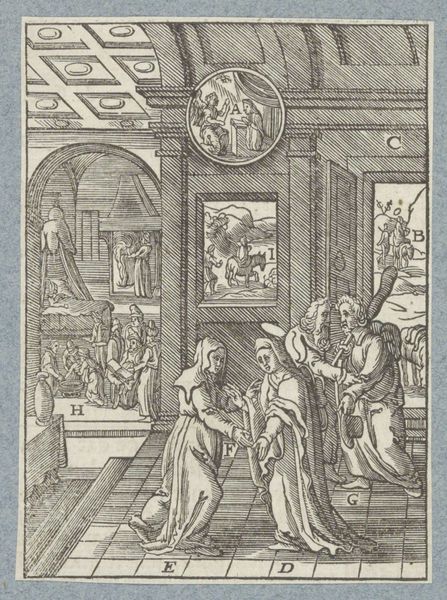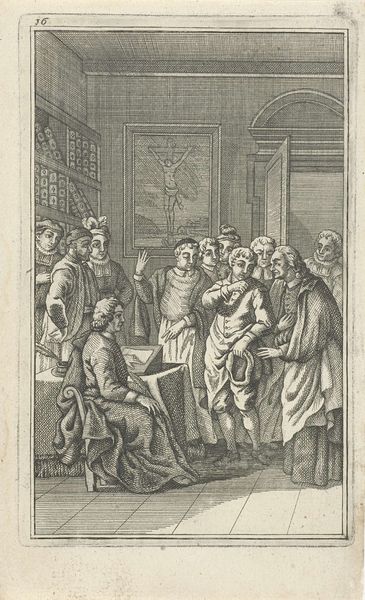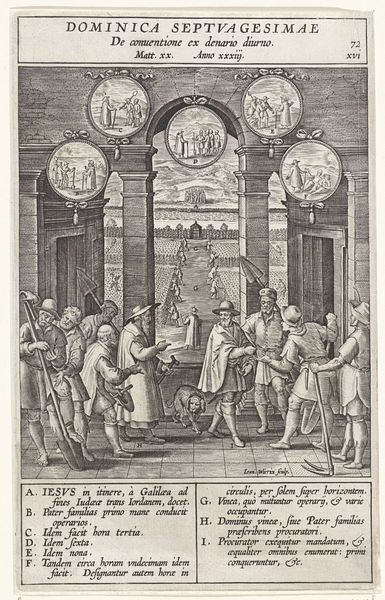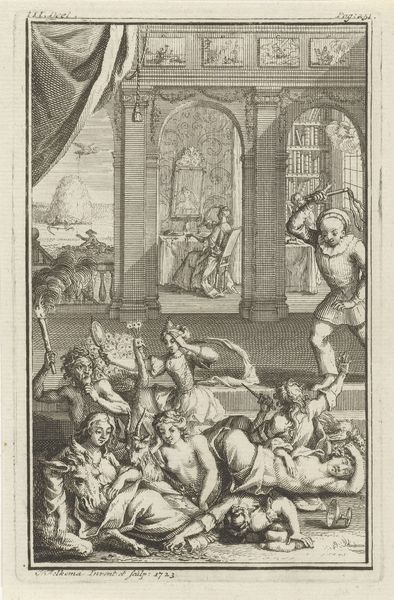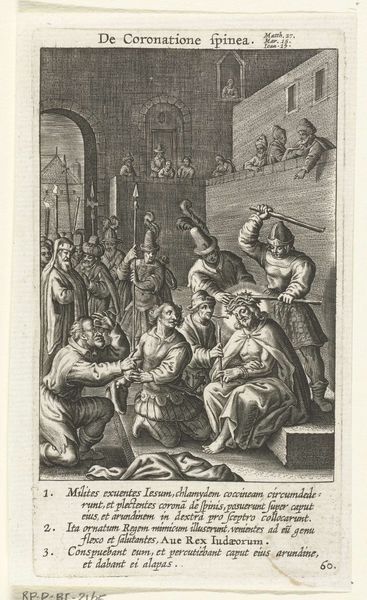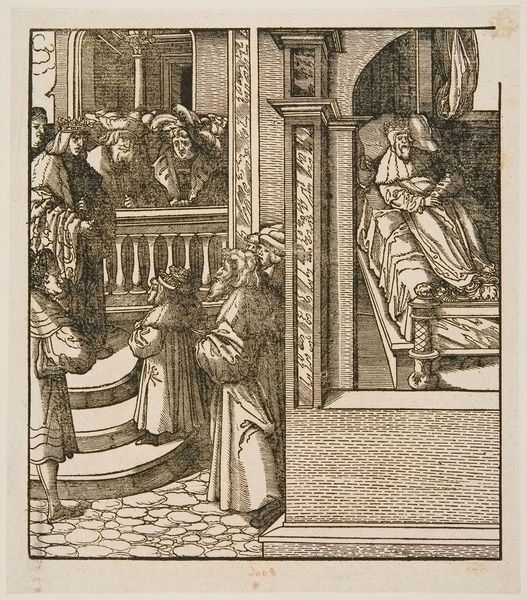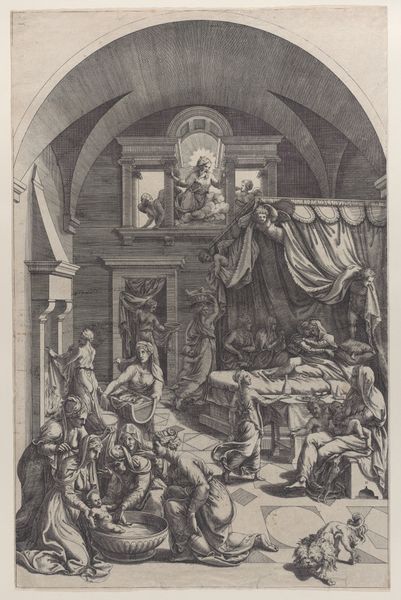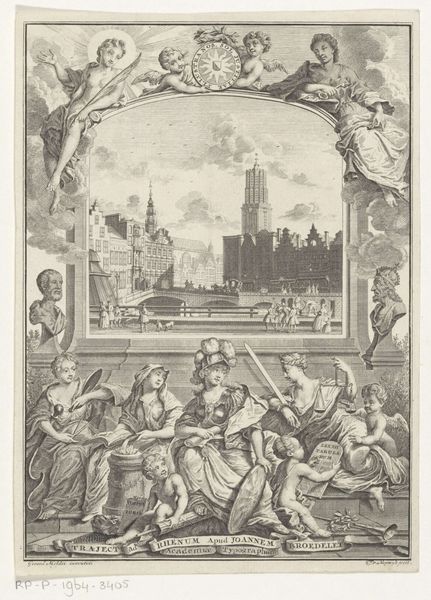
Gelijkenis van de Verloren Zoon: de verloren zoon komt terug naar huis c. 1579 - 1615
0:00
0:00
engraving
#
narrative-art
#
figuration
#
genre-painting
#
italian-renaissance
#
engraving
Dimensions: height 220 mm, width 145 mm
Copyright: Rijks Museum: Open Domain
Dominicus Custos created this engraving, "Gelijkenis van de Verloren Zoon: de verloren zoon komt terug naar huis" sometime between the late 16th and early 17th century. This artwork vividly illustrates the New Testament parable, reflecting the religious and moral teachings prevalent during the Counter-Reformation. Custos uses a detailed, multi-scene composition to explore themes of repentance, forgiveness, and familial love. In the foreground, the son kneels, his worn clothes marking his fall from grace, as his father embraces him. This embrace serves as a powerful symbol of unconditional acceptance, challenging the rigid social hierarchies of the time. Meanwhile, servants prepare a feast. This work invites us to reflect on the complexities of human relationships and the transformative power of forgiveness. It also subtly questions the era's strict societal norms, suggesting a more compassionate view of those who stray from the accepted path. The emotional core of the image—the father’s boundless love—resonates deeply, offering solace and hope to those who seek redemption.
Comments
No comments
Be the first to comment and join the conversation on the ultimate creative platform.


